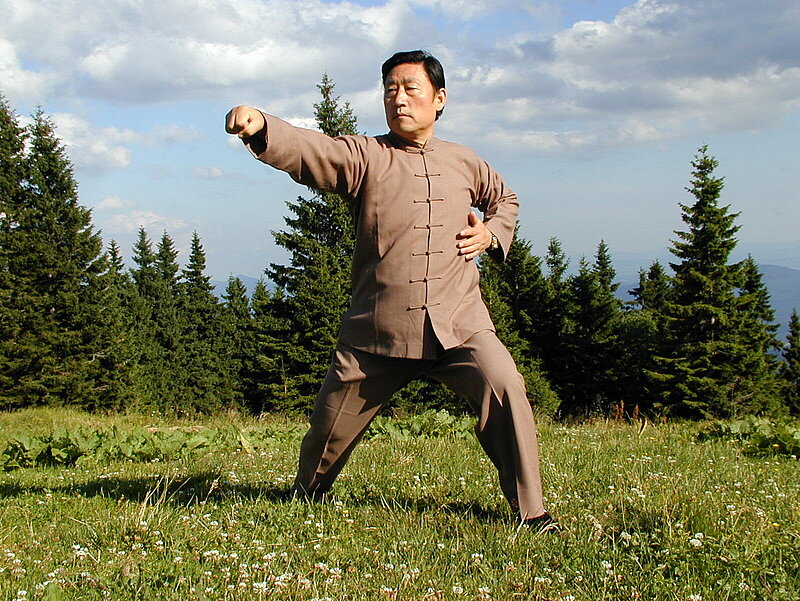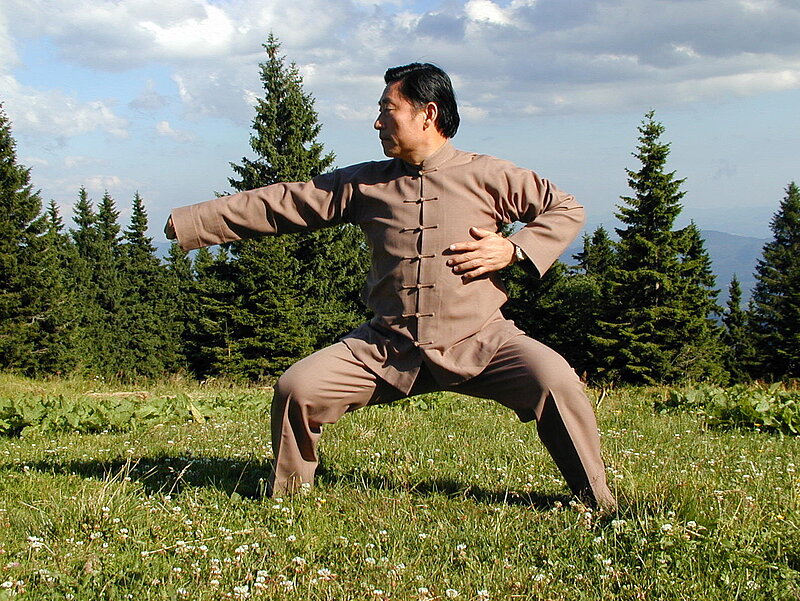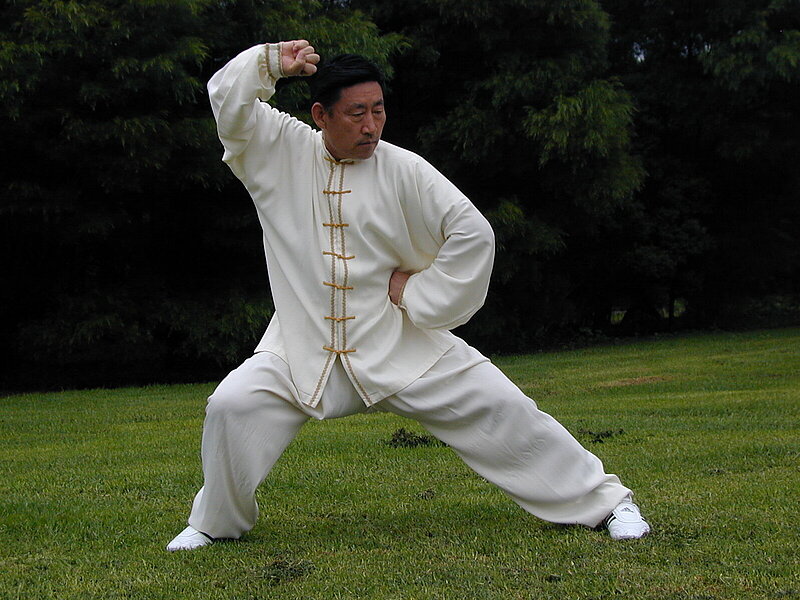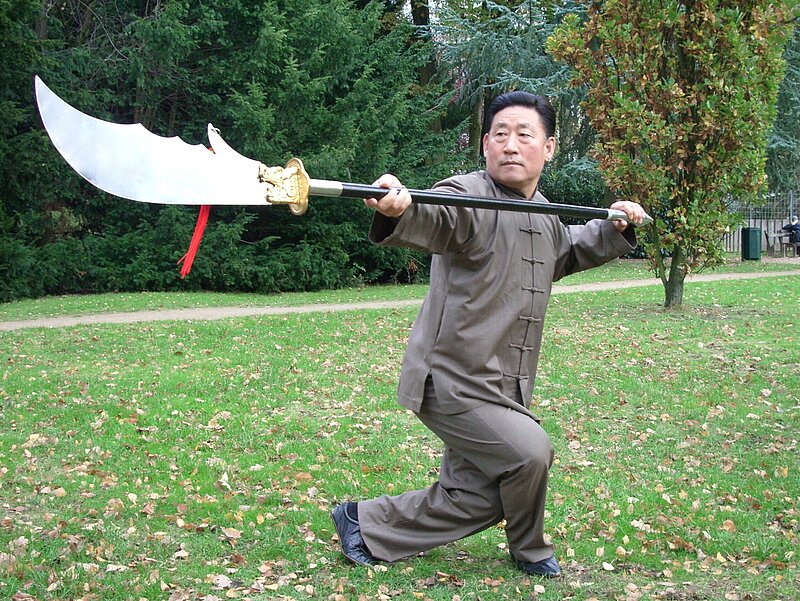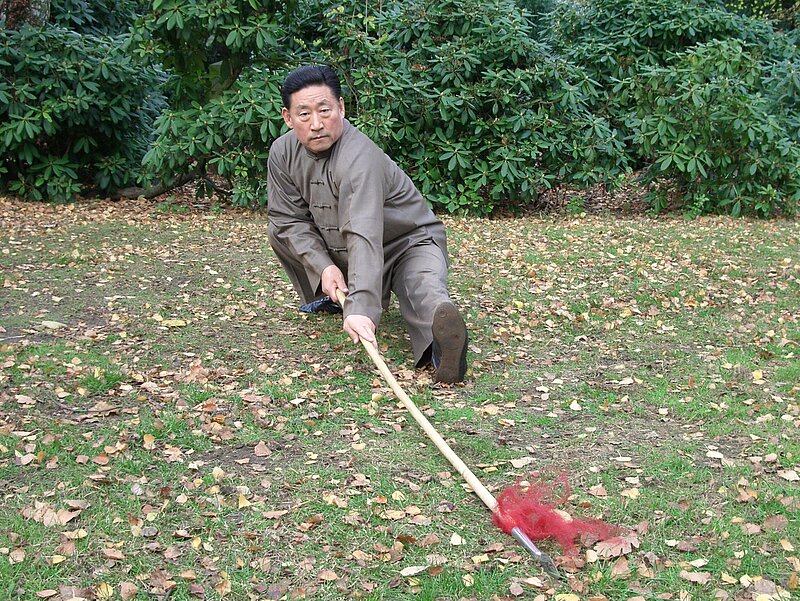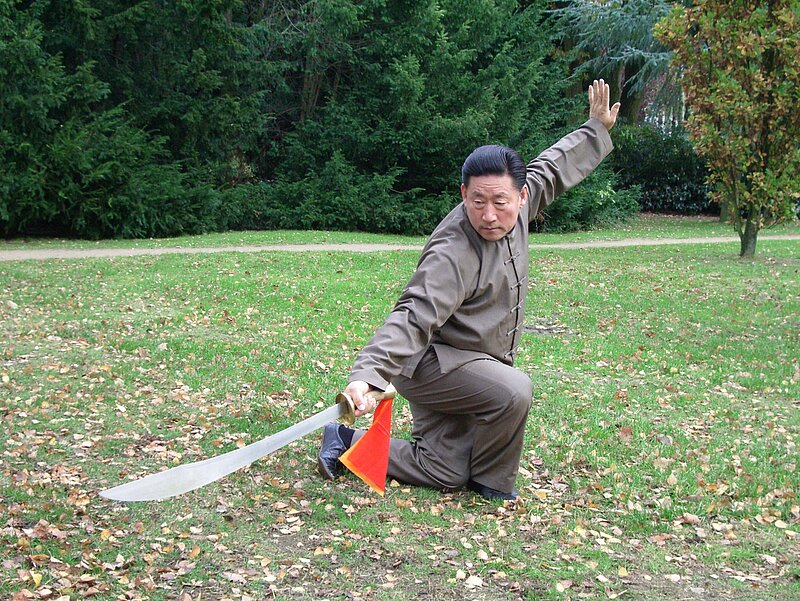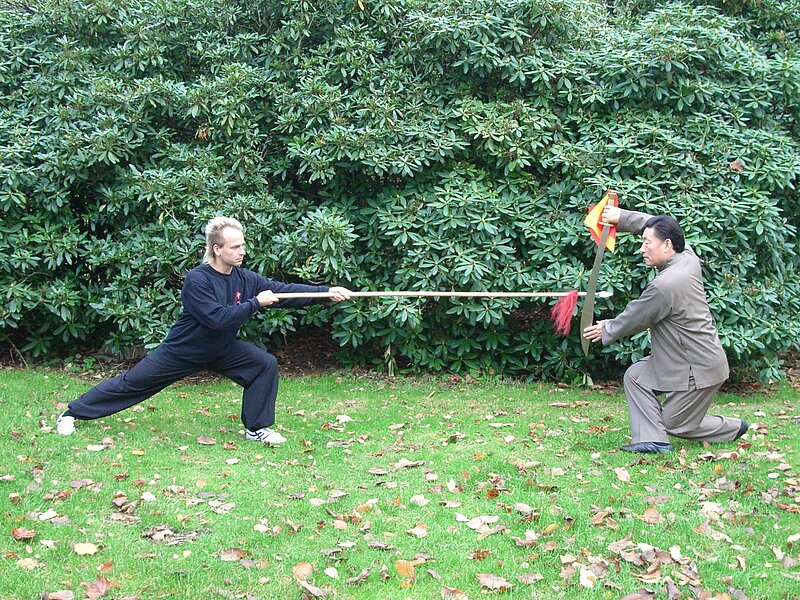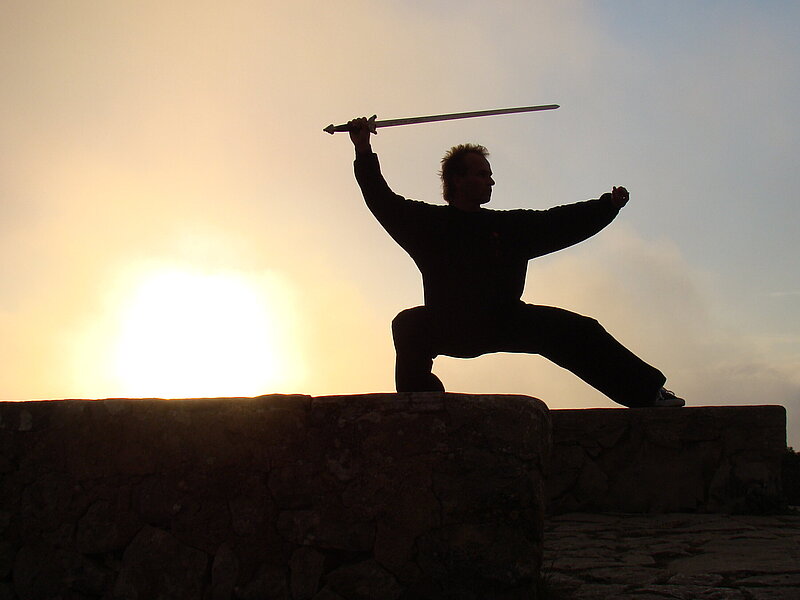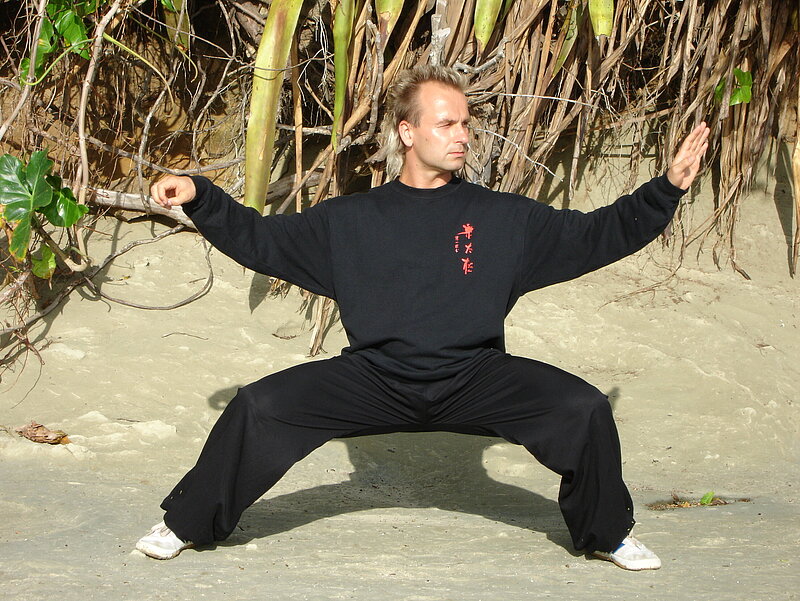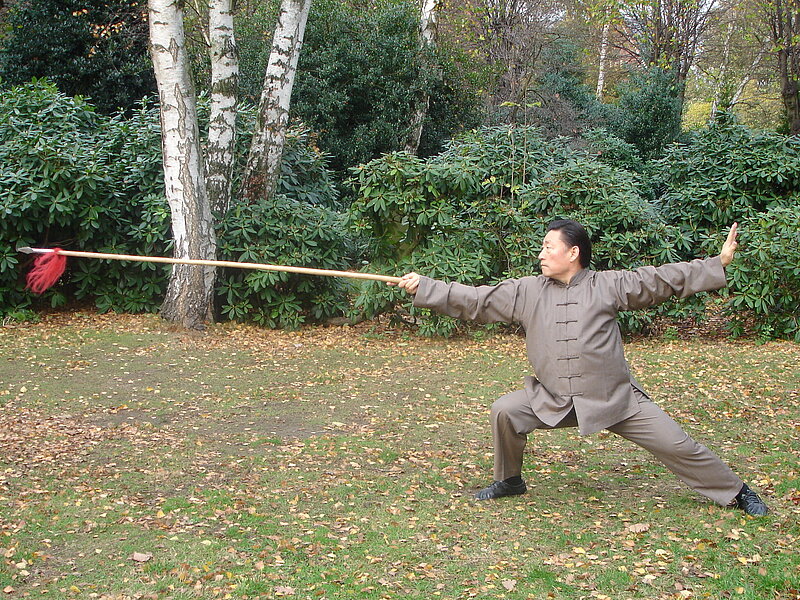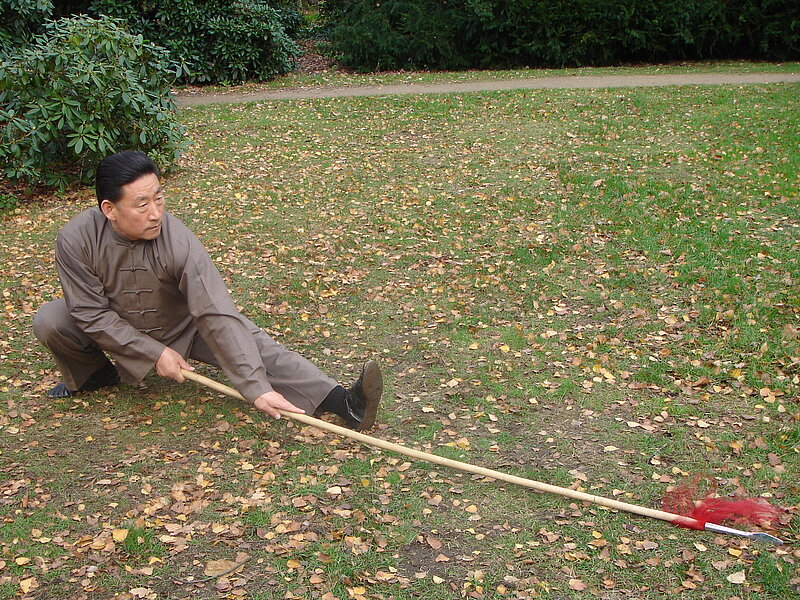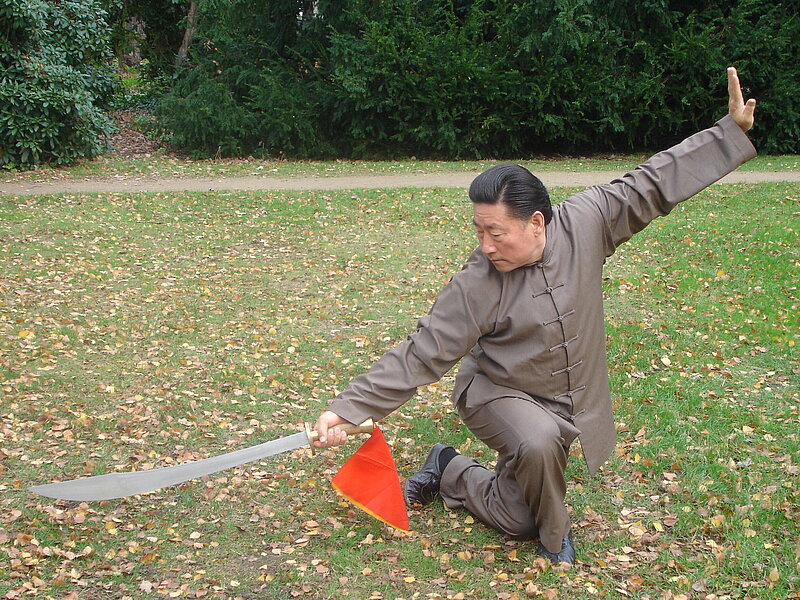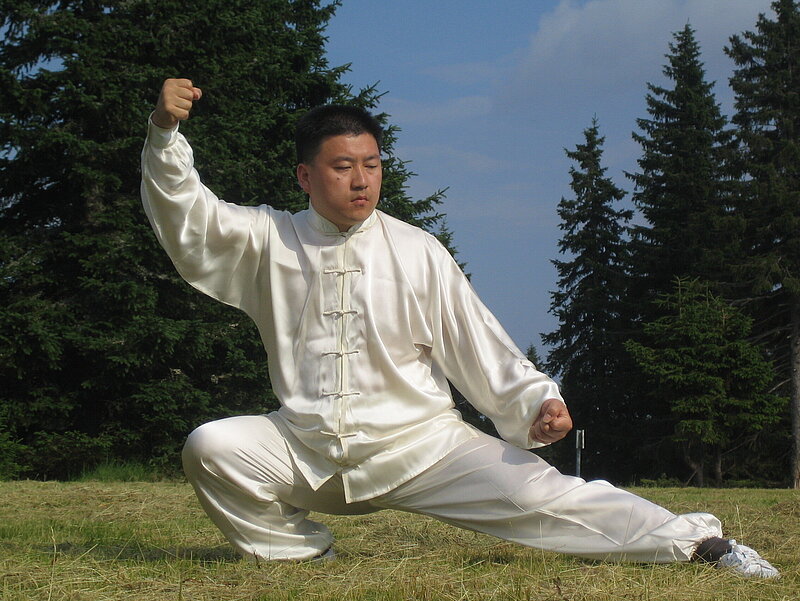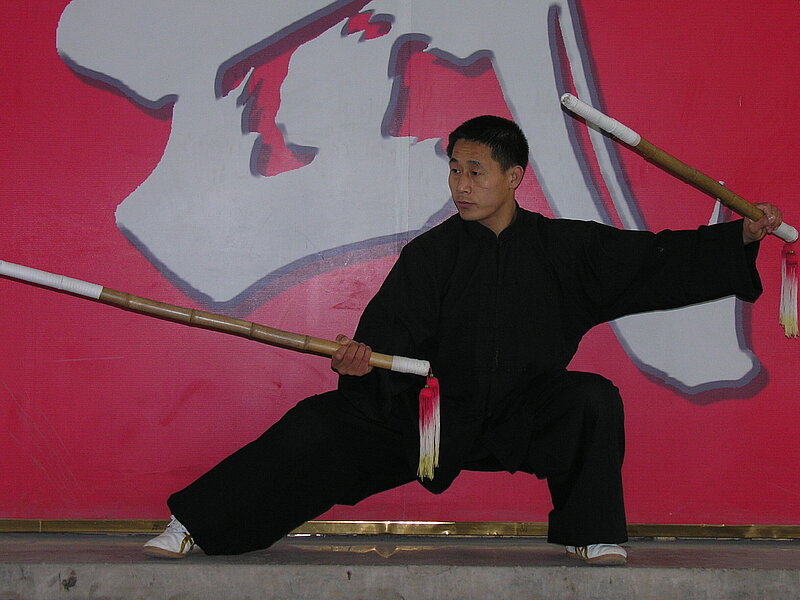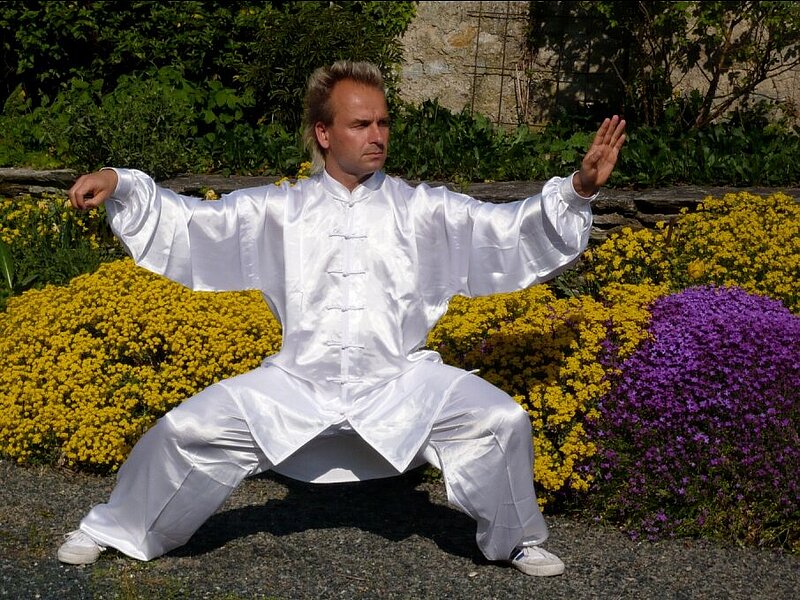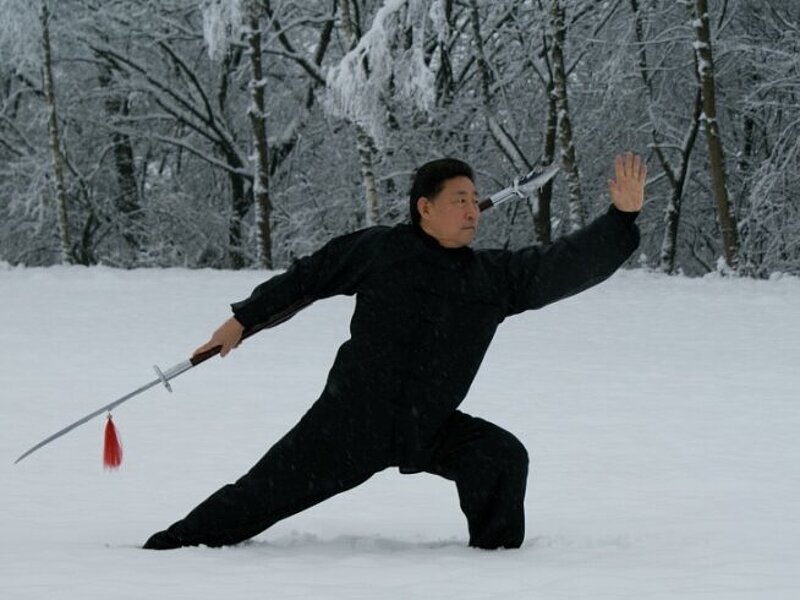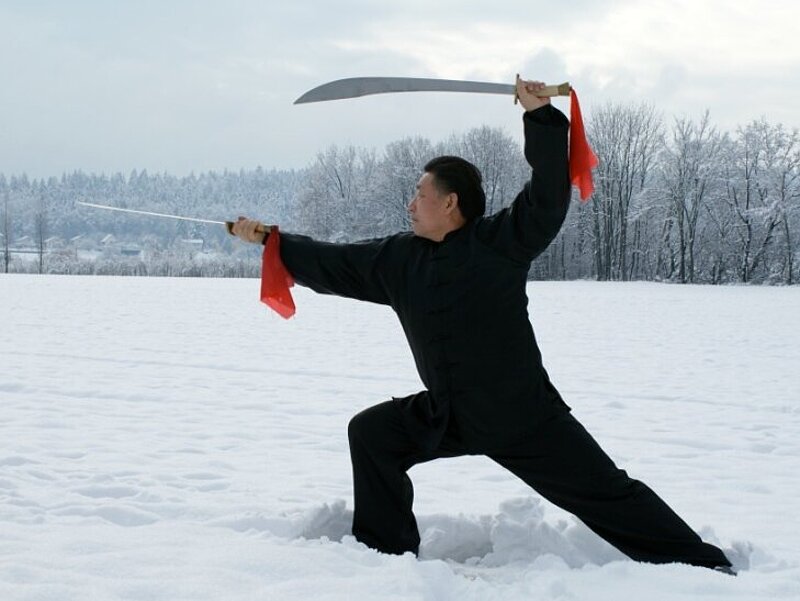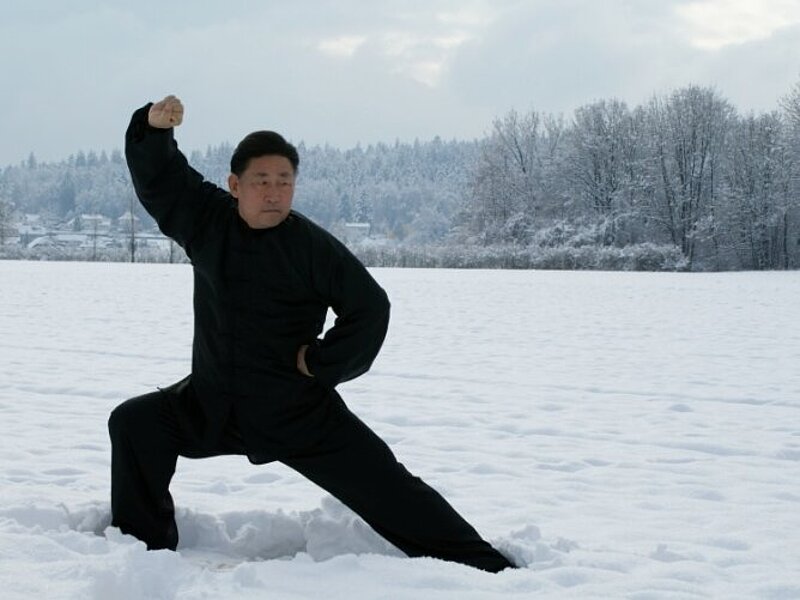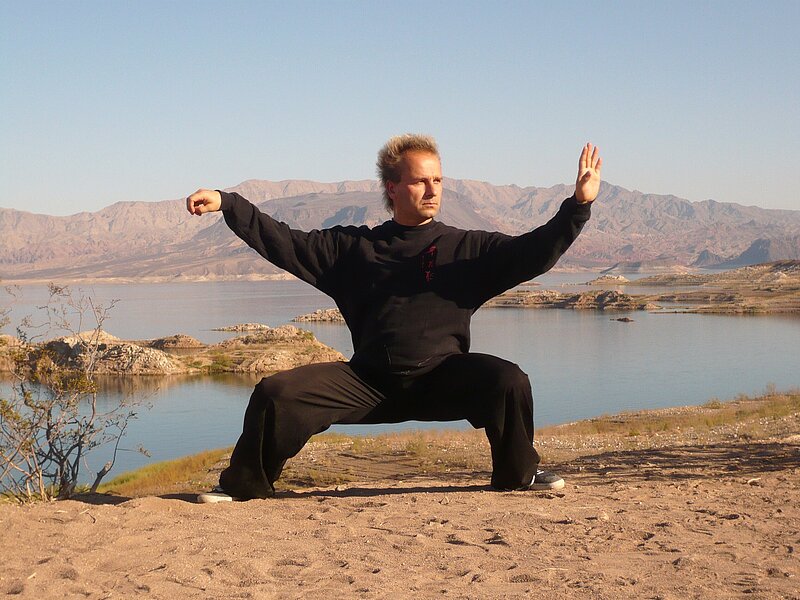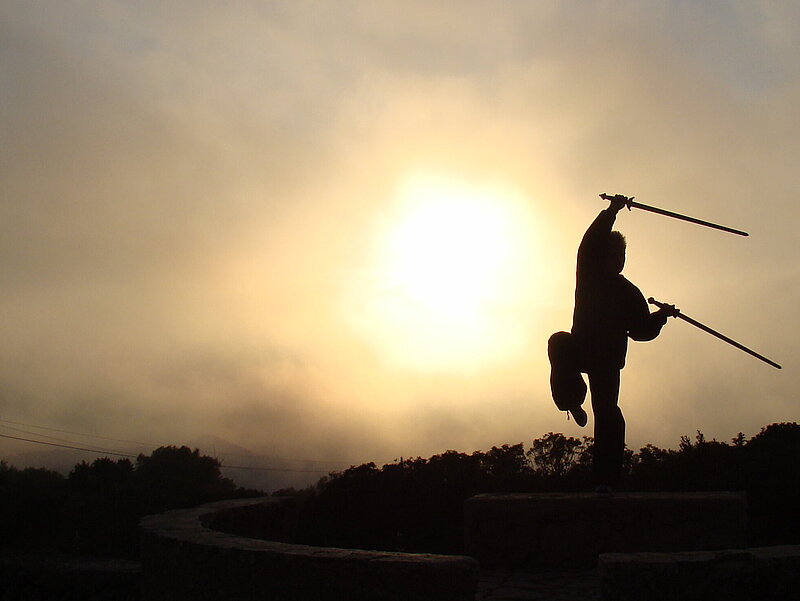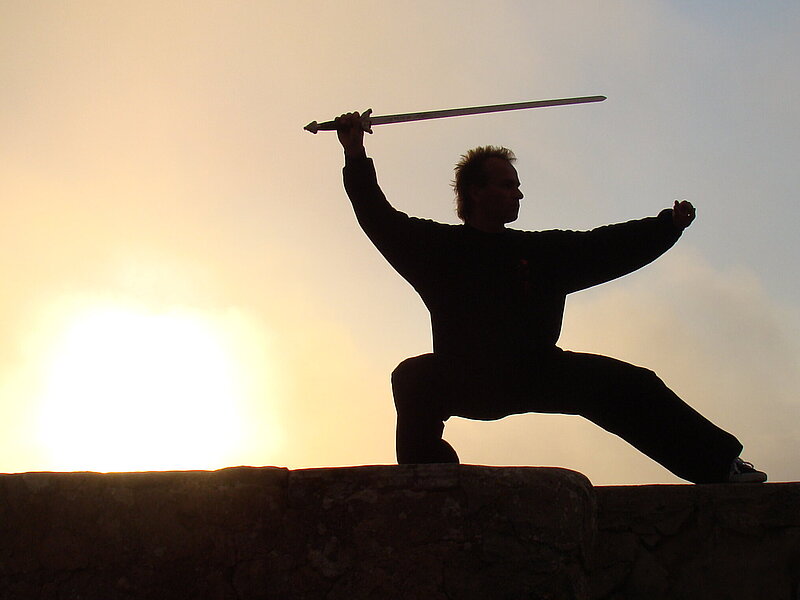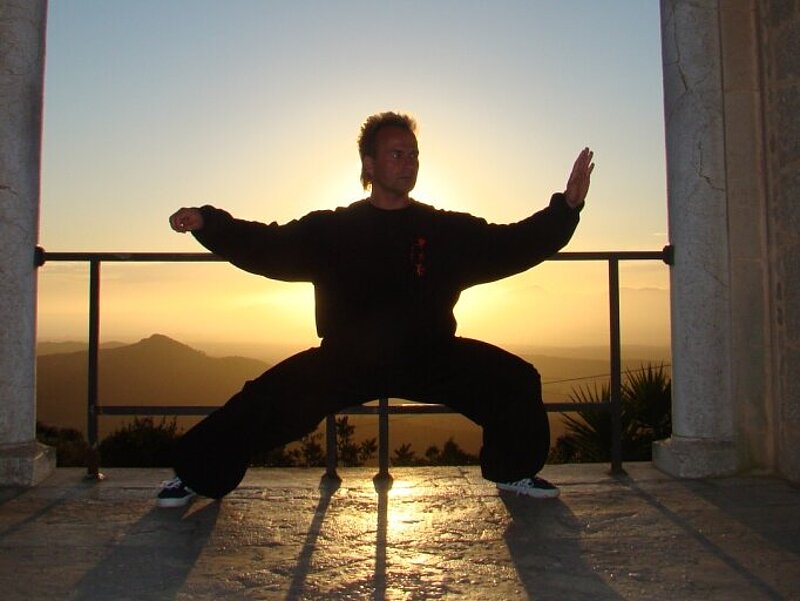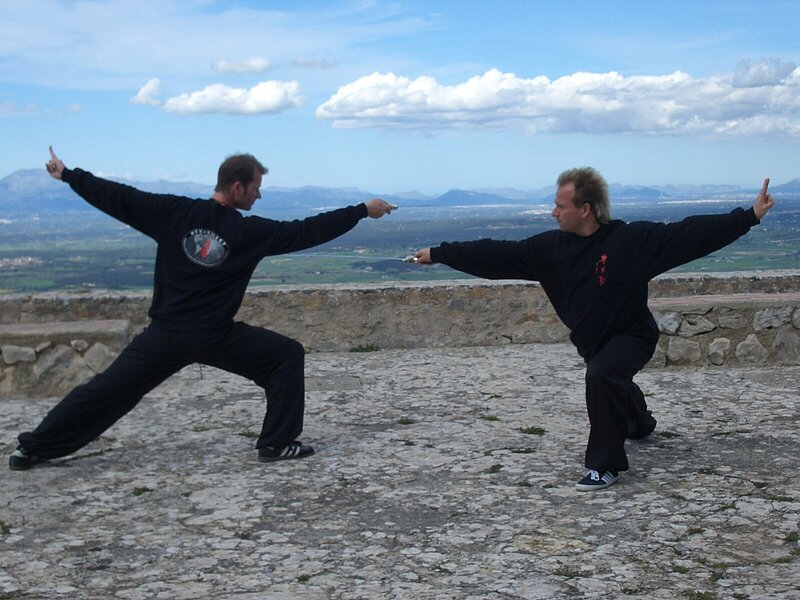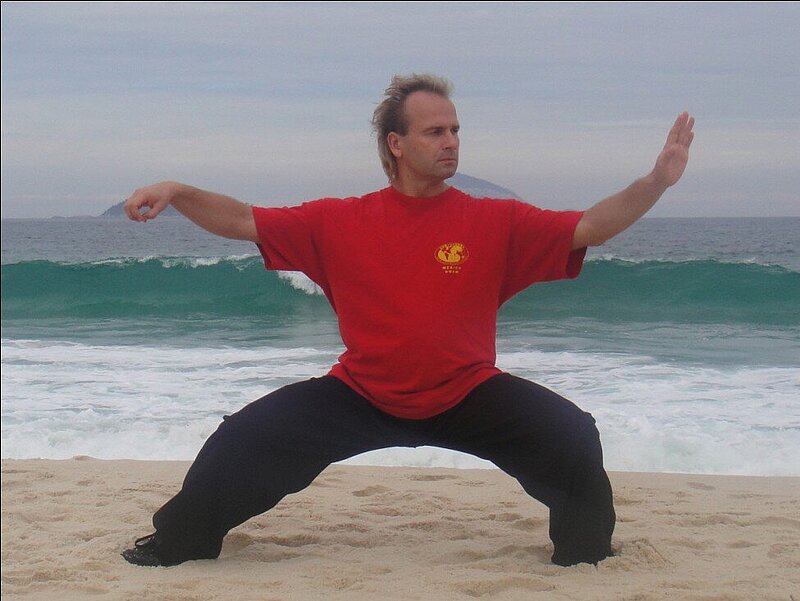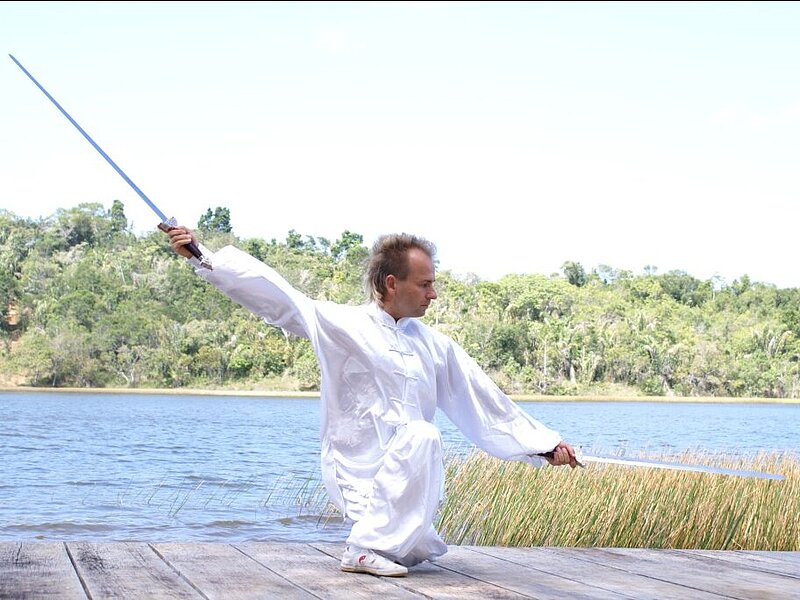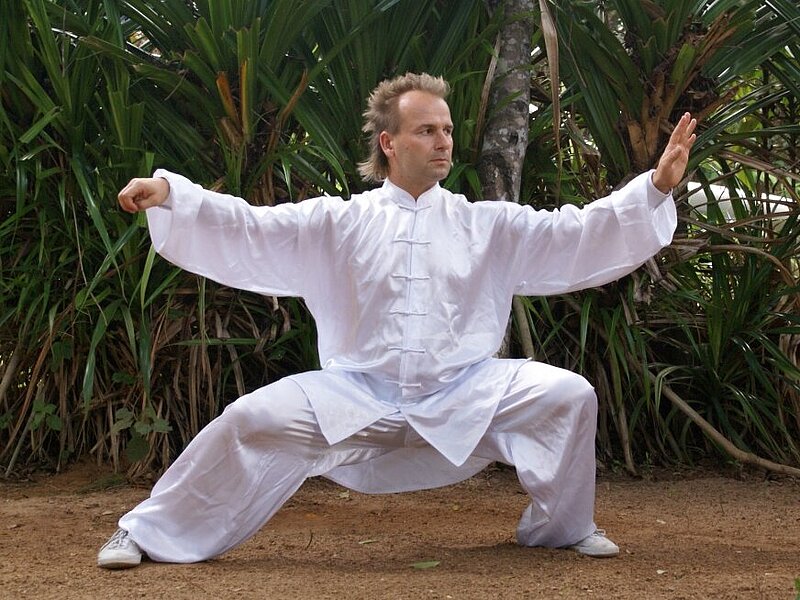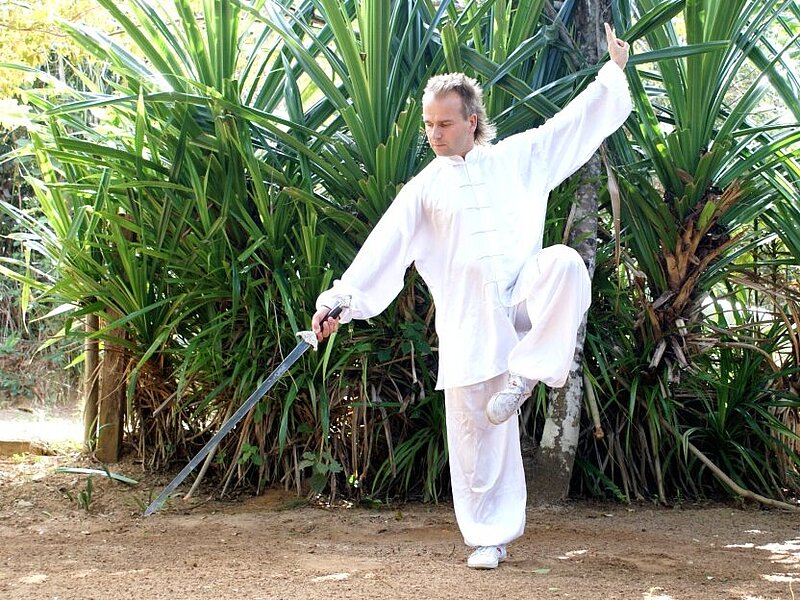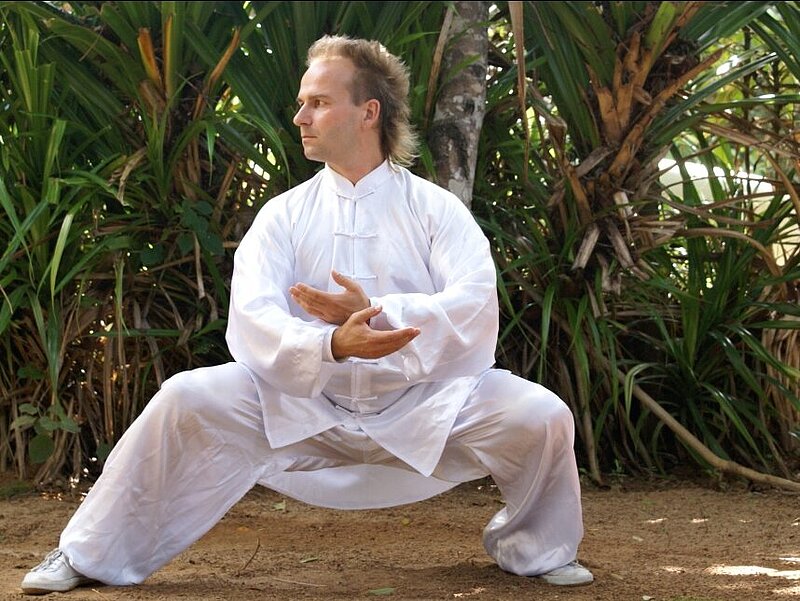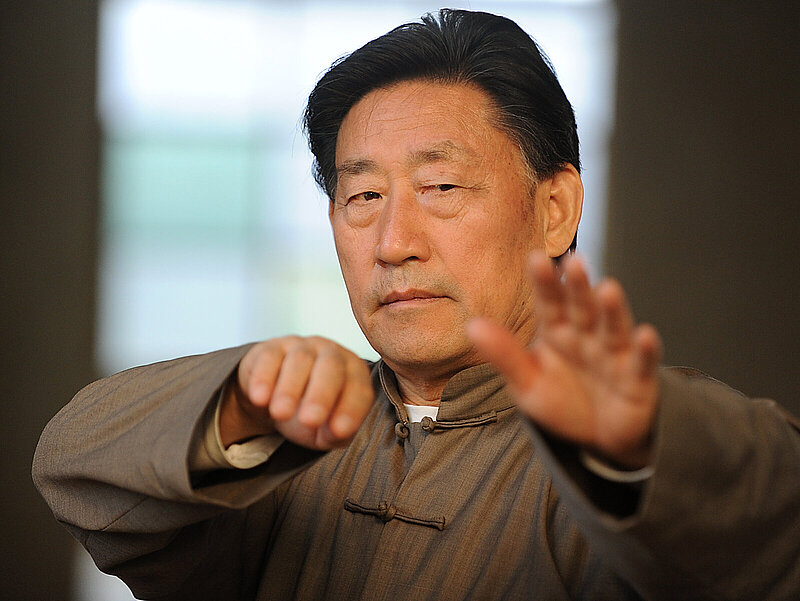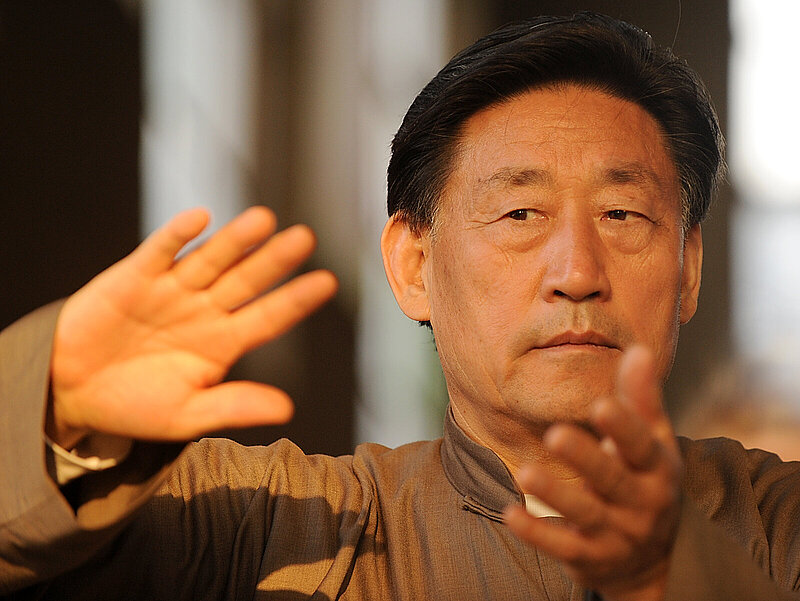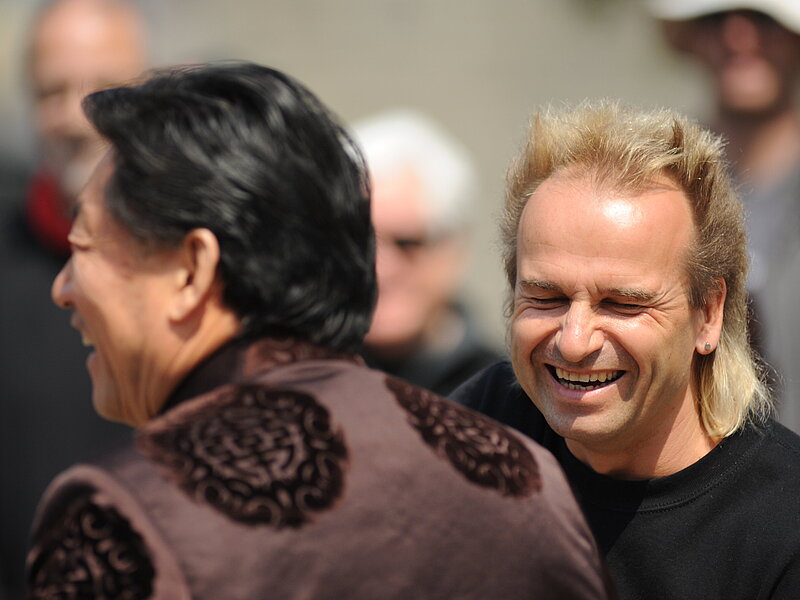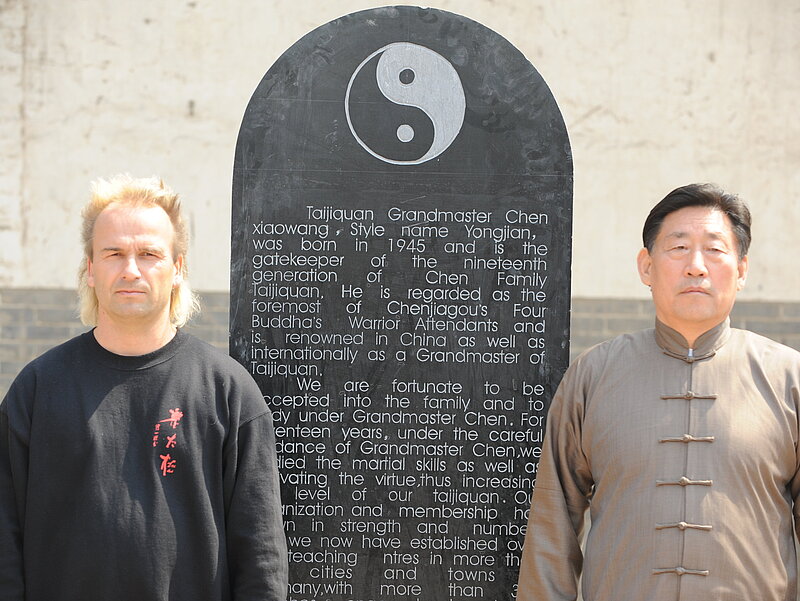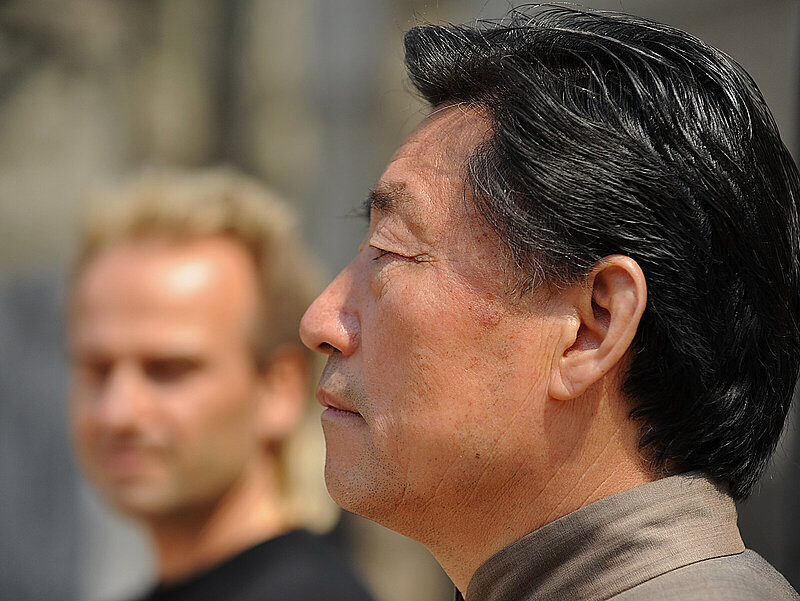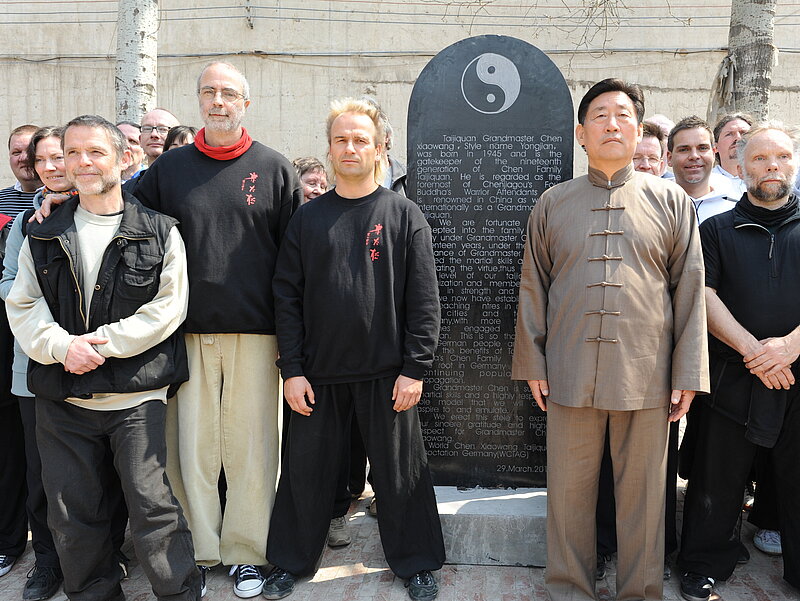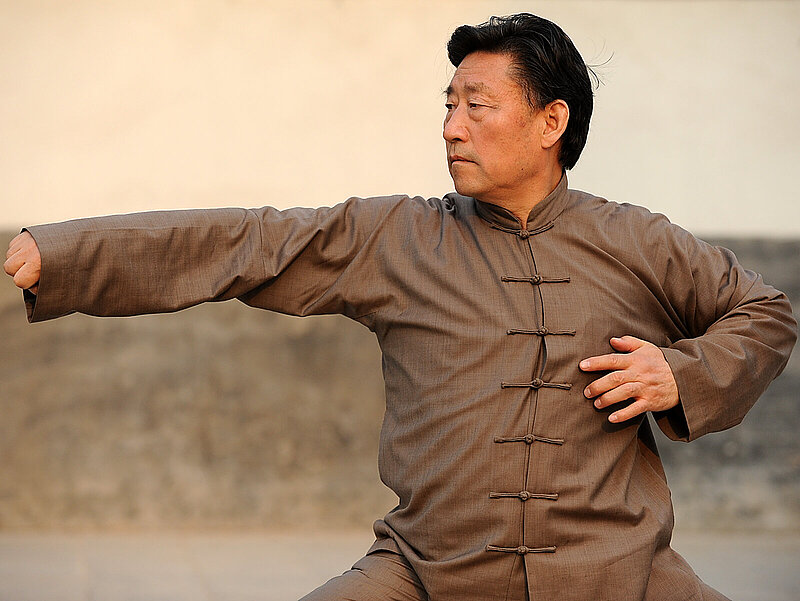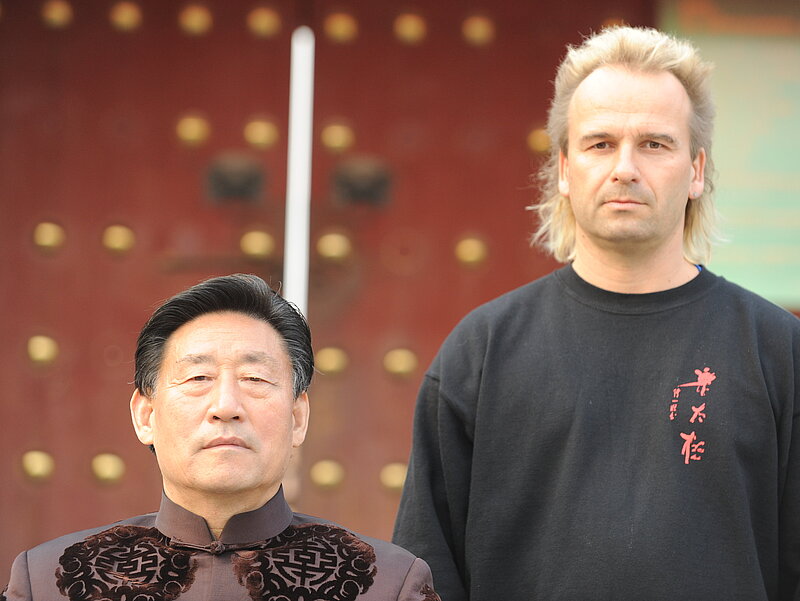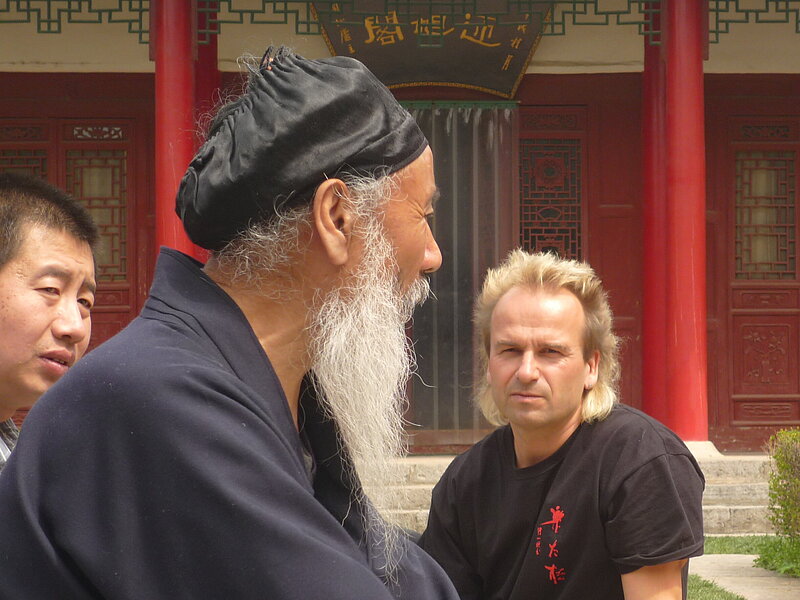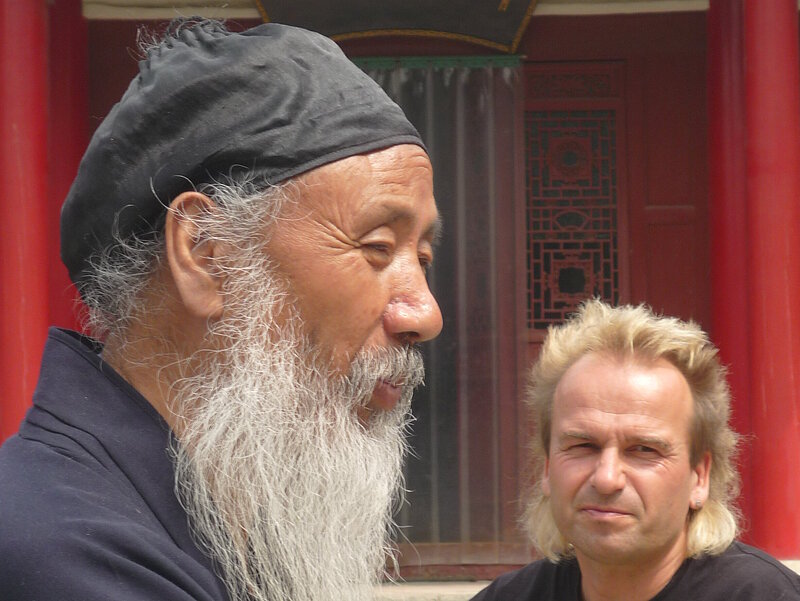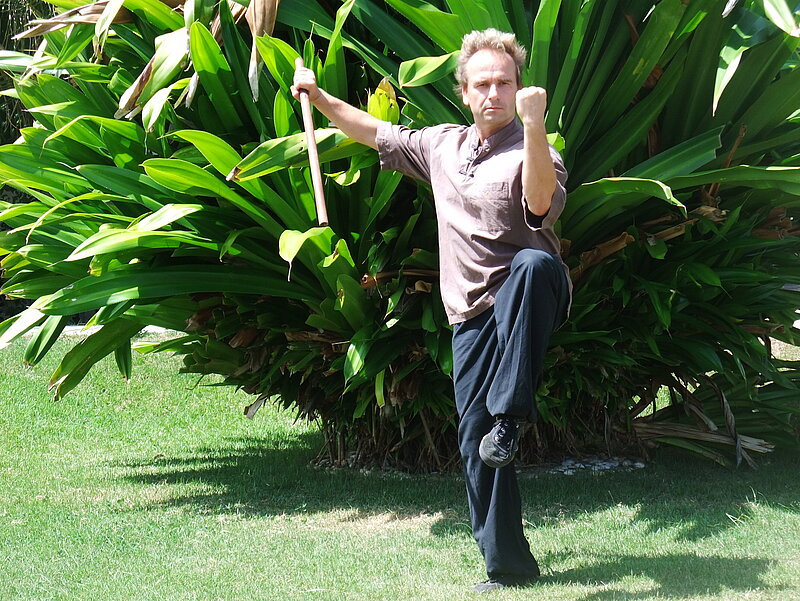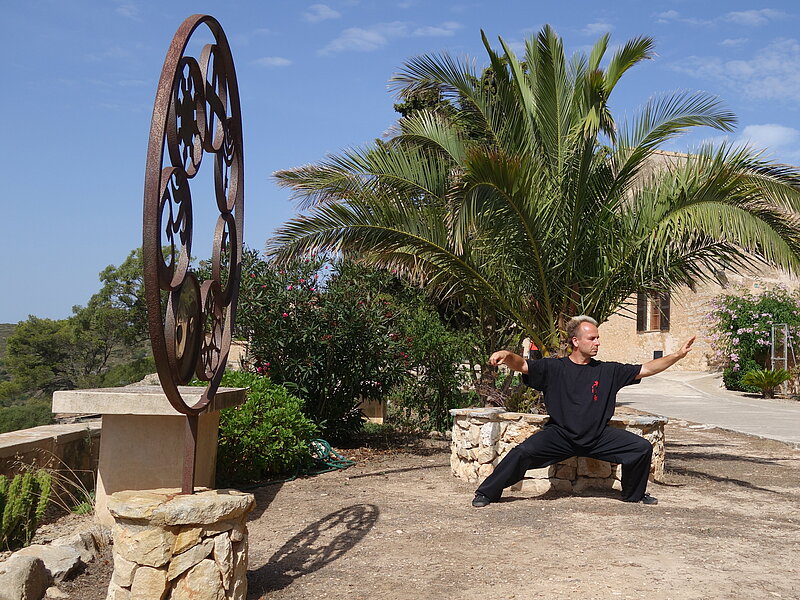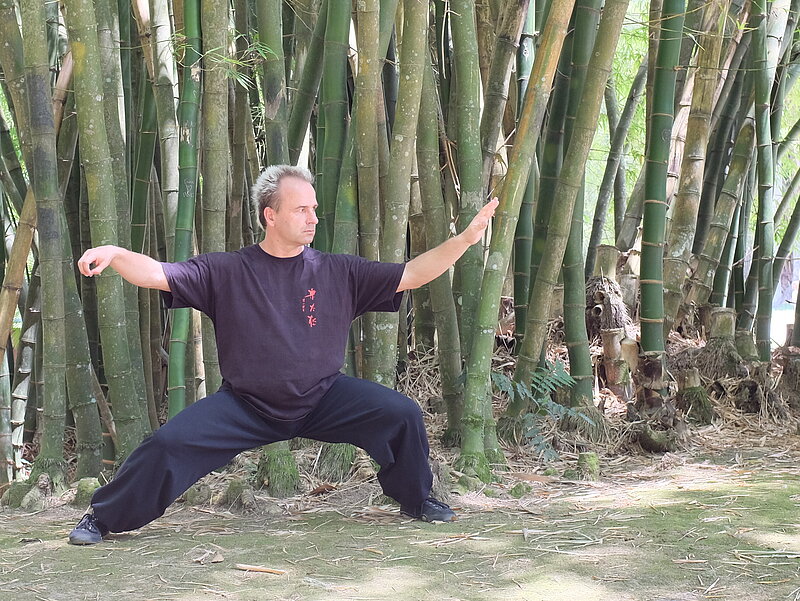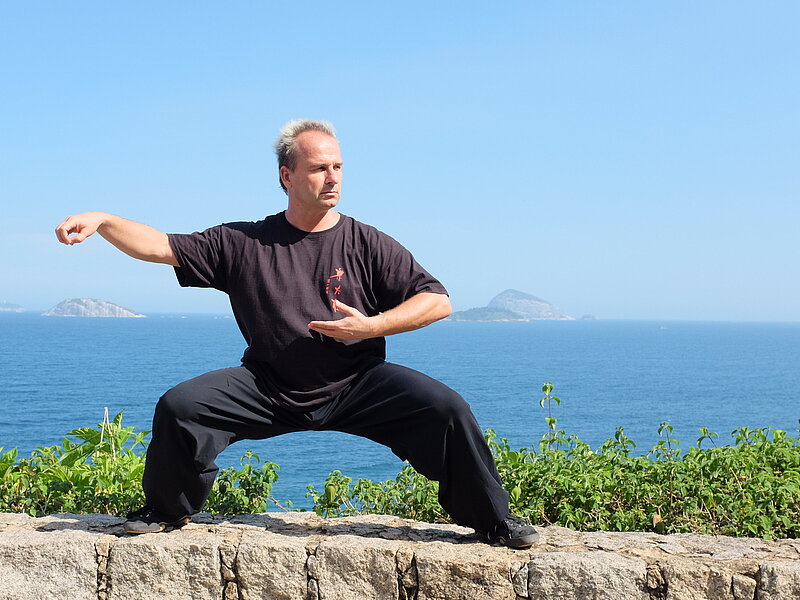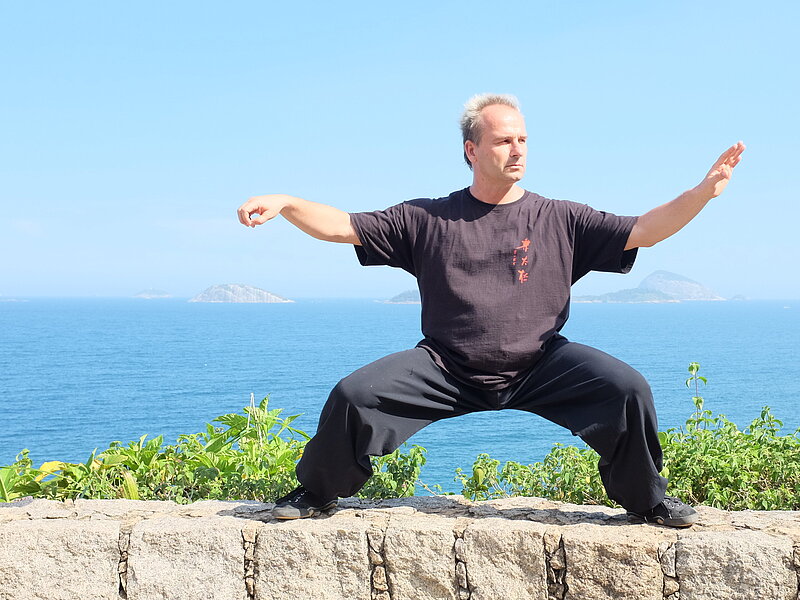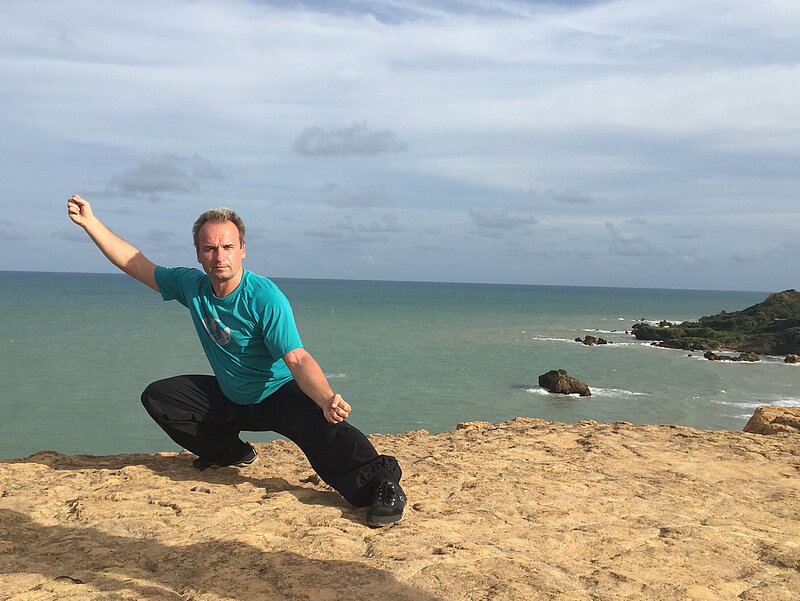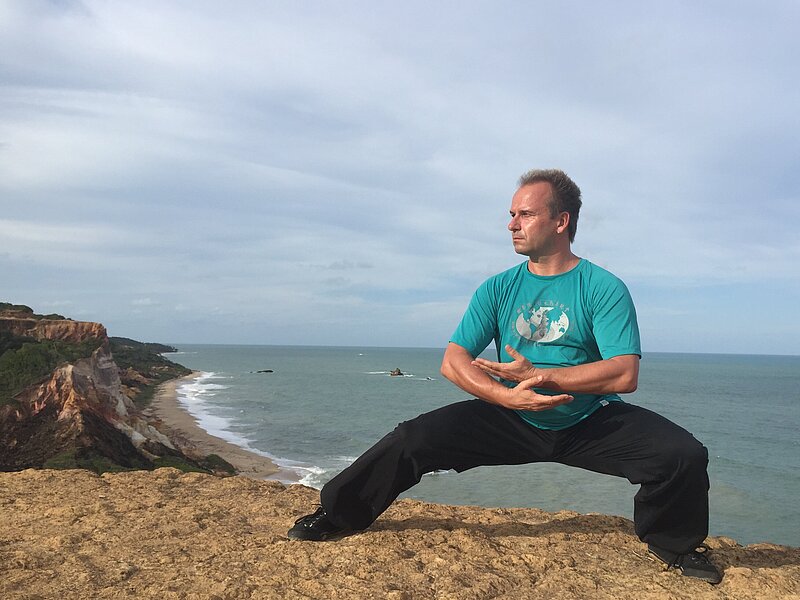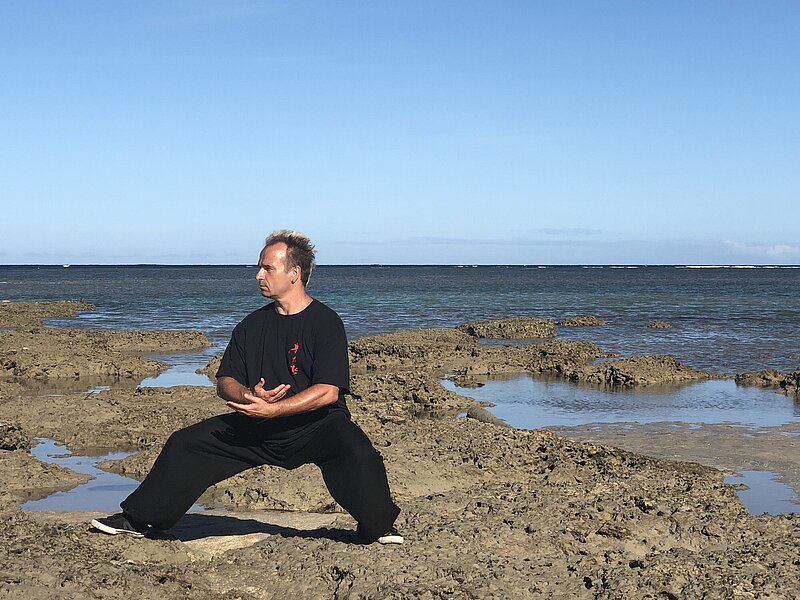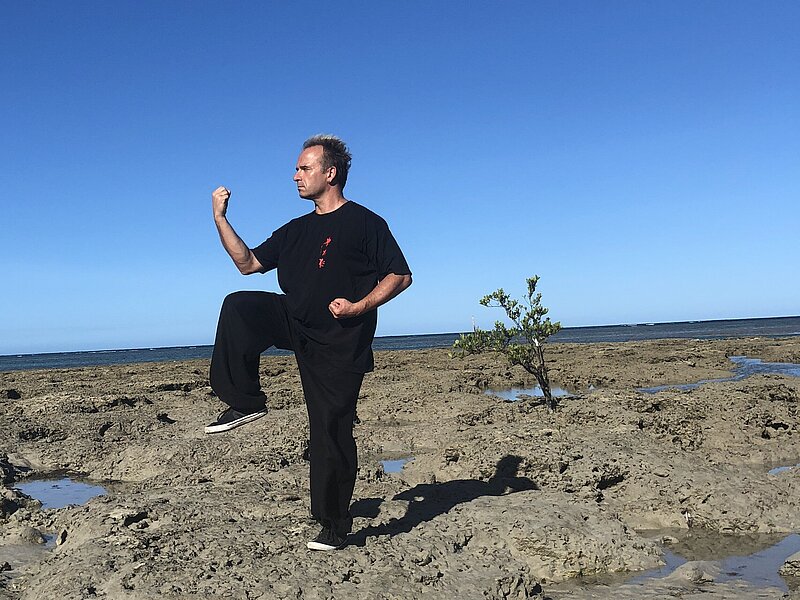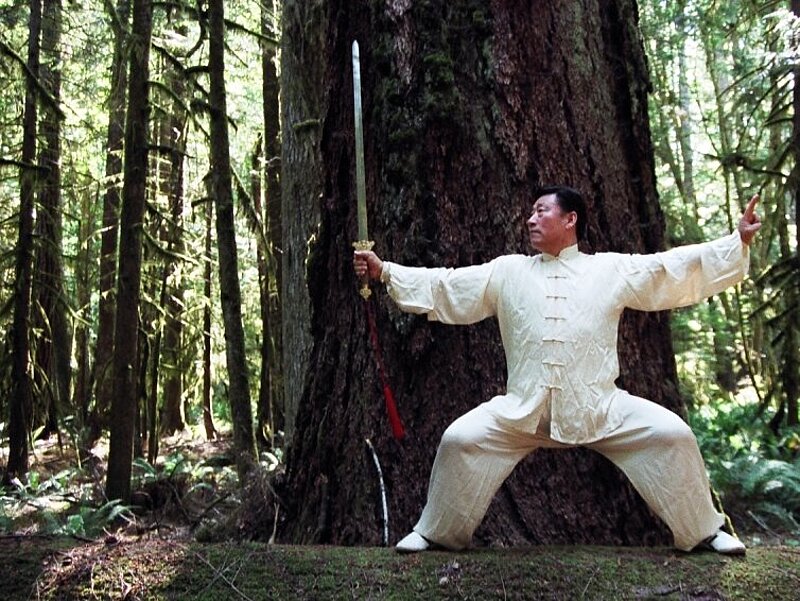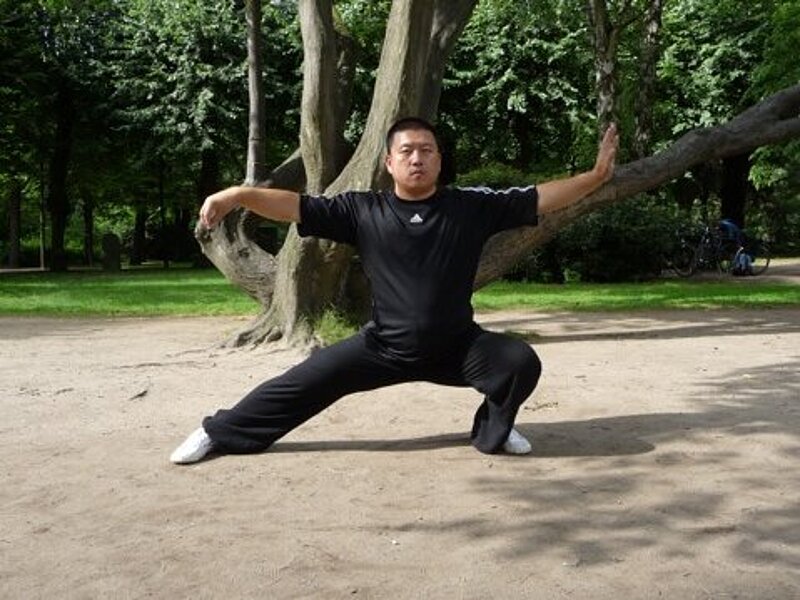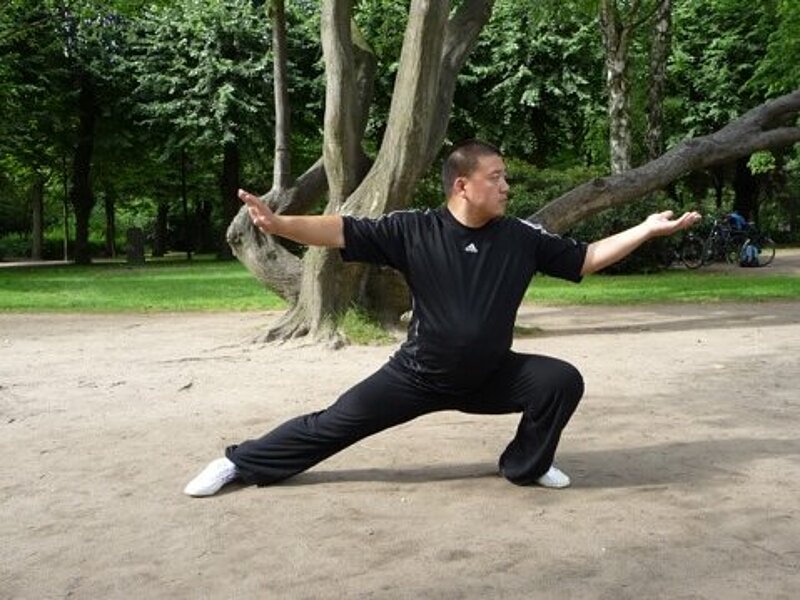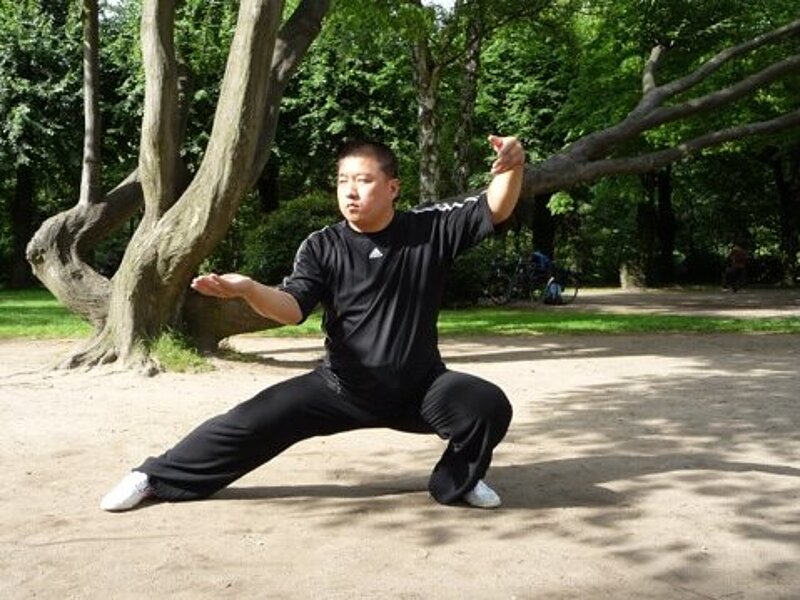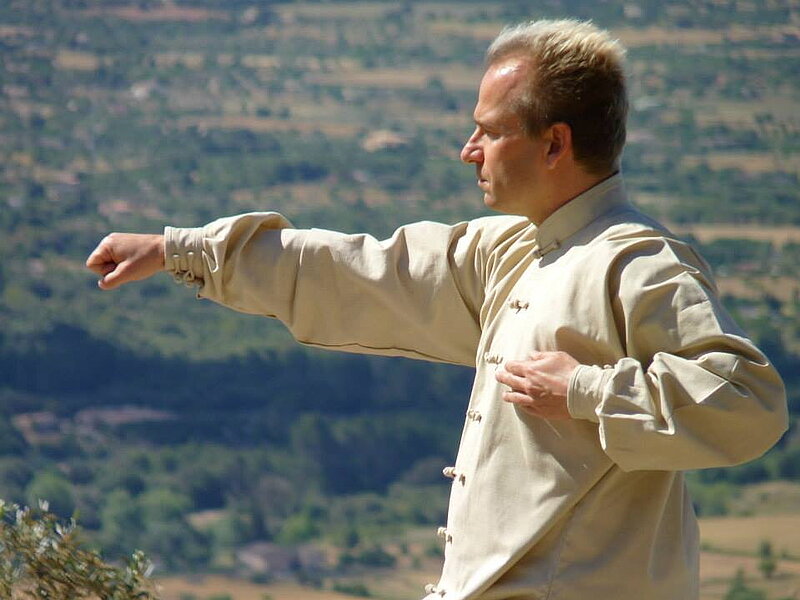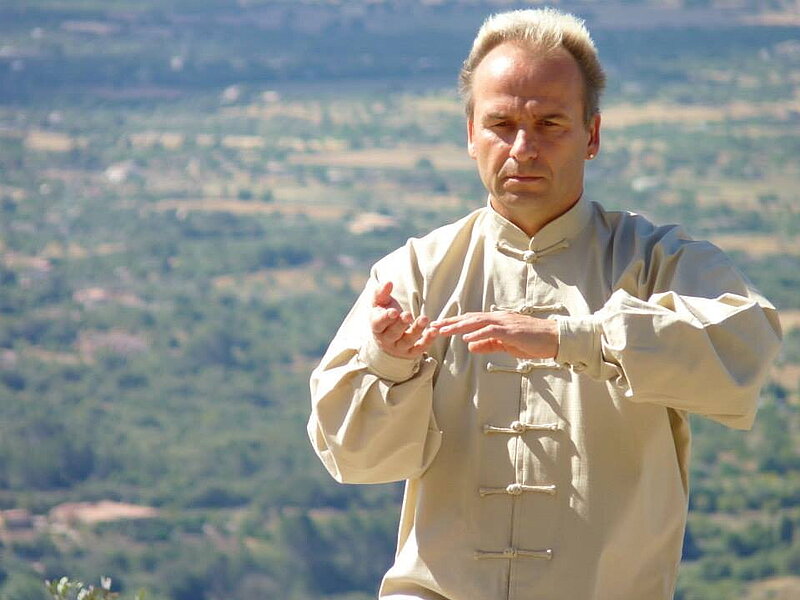Striking Hands 太極打手

The Striking Hands (Dashou) is also a body of practice passed down from its origins to the present day, training the techniques of striking, kicking, wrestling, leveraging, pressing pain points, as well as the necessary strategies, psychological behaviours and body language in emergency situations. The Chen family worked in the field of personal protection for centuries. In addition to practice, the experience passed on here is also transferred to the present-day requirements of the individual through the study of the classical writings of the Chen family.
Taiji Self-Defence 太極自衛

Self-defence has historically played a primary role in Taijiquan. Today, as in the past, the focus is on individual self-protection and the protection of family members. The rich experience of lethal conflicts from the past centuries within the Chen clan, which was anchored primarily in the battlefield and in the protection of travellers, led in the last century to a complex variety of personal self-defence. Jan offers these systematised in the two areas TAIJIdirekt and TaijiPRO.
- TAIJIdirekt formulates a concept of self-defence formed out of the overall context. A mere stringing together of learned techniques remains ineffective as long as the techniques are not crowned by a concept. This concept gives the student the security to do the right and appropriate thing in an emergency without having to think about it. The necessary techniques are then provided by the
- TaijiPRO, by transforming the images of all forms into clear and effective applications.
Both TAIJIdirekt and TaijiPRO strictly follow the tradition of the ancestors Chen Wangting and Chen Changxing and are, despite their modern reference, traditional and exclusively related to real assaults.
Taiji Weapon Fighting 太極武裝戰鬥

Weapon fighting in Taijiquan provides a historical retrospective of armed conflicts of times past. However, this is far from being just a hobby. It is precisely through the seriousness of armed conflicts and their usually fatal or seriously injured outcomes, as well as through the psychology inherent in the nature of each weapon, that the student learns extremely important mental processes that are indispensable for a real confrontation. In addition, there are further important insights in the area of footwork, distance and timing. And last but not least, some aspects of the historical weapons can be transferred to modern equivalents.
Jan Silberstorff also developed a Taiji method of self-defence with short sticks.
Taiji Tournament Fight

In order to further approximate the martial skills of Taijiquan to a realistic scenario, but also for sporting enjoyment, WCTAG supports tournament fighting. Here we train our fighters from shallow pushhand comparisons in a fixed stance to so-called standup wrestling (Huobutuishou) and Mixed Martial Arts (MMA) - also from an initial shallow to a full variant.
Safety training

Based on the ancient tradition of the Chen family in the field of warfare, security service and property and personal protection from the 17th to the beginning of the 20th century, Master Jan Silberstorff, in cooperation with many experts from national and international special units and security forces, developed a security training adapted to modern times. This special training is based on the Taiji principle and provides reality-oriented, professional concepts not only for self-protection but also for the protection of the family and effective assistance to others without putting oneself in unnecessary danger. Going beyond the programmes of "man-on-man" confrontation of TAIJIdirekt, Taiji Safety Training provides methods designed for private use, as well as strategic, psychological and physical training and behaviour in relation to the modern dangerous situation of our world today. The entire programme is philosophically underpinned in such a way that, despite all seriousness, the training does not end in a paranoid "something happens everywhere" scenario. Instead, it leads to an increased and interested positive attention towards society and fellow human beings, which in everyday life leads to more helpfulness and acceptance of others. In addition to the insights and training methods of modern professional violence prevention highlighted under the Taiji principle, the training also includes an evaluation of 'Sunzi - the art of war', as well as old manuscripts of the Chen family. The weapons section of Taijiquan, which originated in the 17th century, is expanded and updated by modern means of application. Taijiquan thus finds a continuation of its real efficiency of the past centuries into our present time. The contents of the programme, which is initially divided into three modules and certified:
- Development of danger and situation awareness, behaviour in dangerous and threatening situations
- Development of mindfulness and sensitisation towards the immediate and wider environment. This includes early detection of dangers including training in profiling. This not only leads to a level-headed "danger recognised, danger averted" methodology and a de-escalating mode of action, but also to the ability to help in social contexts through a more conscious perception of my surroundings.
- To protect oneself from one's own aggression in order to protect others and thus oneself. Based on the realisation that a high proportion of violent crimes in the civil sphere, especially against women, occur within relationship structures of various kinds, a general examination of these potential dangers is also part of the programme here.
- Behavioural measures and prevention against religiously or politically motivated violence.
- Preventive and concrete behavioural strategies against a personal as well as a mass attack in the form of a group targeting me as a private person or a lone perpetrator targeting an anonymous group of people.
- Awareness raising and use of effective teamwork.
- Prevention before and behaviour/escape options during an abduction.
- Introduction to building and site protection.
- Constructive escape and hiding behaviour.
- Self-awareness and self-assertion instead of victim mentality or overestimating oneself.
- Modern weaponry with regard to personal use and protection against it.
- Introduction to and discussion of the legal basis of the topic.

